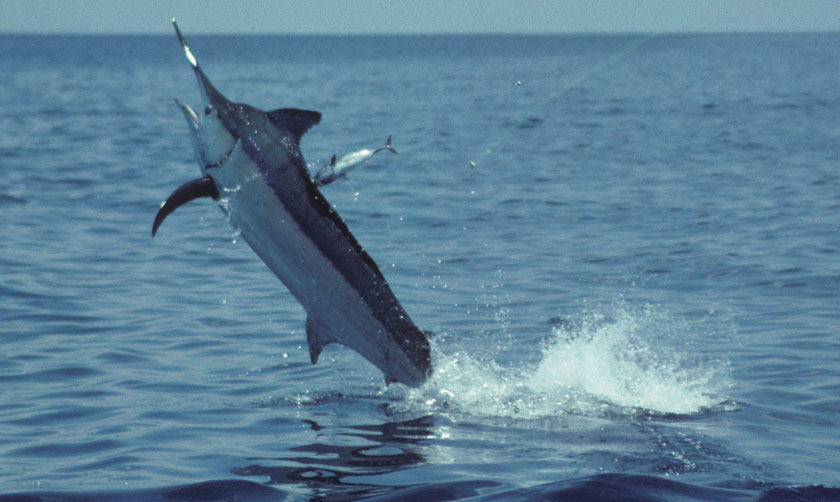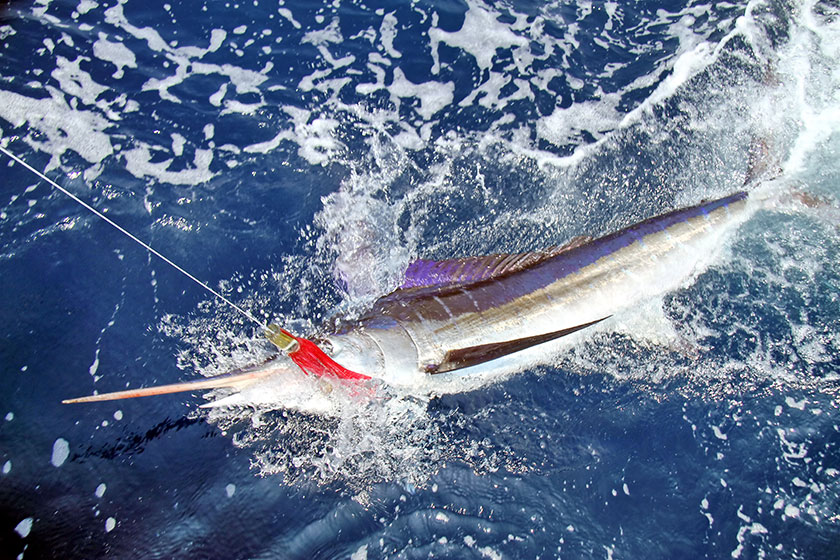“The highlight of our trip – swimming with a whale shark…and seeing the humpback whales and plenty of porpoises. It was an amazing trip!”

Consists of the following fishing areas in the Gulf of Chiriqui:
The Gulf of Chiriquí is a part of Panama that encompasses Coiba National Park and Golfo de Chiriquí National Park. There are dozens of islands in this gulf. Along with the islands of Coiba National Park there is also Islas Secas, Los Ladrones, Parilla, Isla Boca Brava, Isla Palenque and Isla Montuosa.

Montuosa is the farthest island from Panama in this gulf. During certain seasons you can even spot Galapagos seals on Montuoso. The Gulf of Chiriquí also includes some of the most famous big game fishing areas, such as Isla Montuosa and Hannibal Bank, located just 13 miles east of Isla Montuosa and 20 miles west of Coiba National Park.


Coiba National Park has gained World Heritage Site status. Many of the same species found in Coiba National Park can also be found in other areas of this gulf. Whales can be seen in the Gulf of Chiriquí throughout the year and are seen in large number from May to November. This is a season of migration for the Humpback Whale from the icy waters of the arctic to the warm waters of the Gulf of Chiriquí. Many give birth in the protected waters of Coiba National Park but can be seen by all nearby islands.
Panama’s Tommy Guardia National Geographical Institute is charting the first interactive map for whale-watching in Latin American to aid in collecting research and contributing to the protection and preservation of the endangered mammals.
“When the Green Association of Panama in 2003 began the ‘Save the Whales’ campaign, people thought that the mammals were only in cold countries, and now it’s a rare person who doesn’t know that Panama has whales,” said Despaigne.
The Humpback whales are one of over 20 species of marine mammals that can be observed in the area. The Tropical bottlenose whale, Fin and Pilot Whales along with large pods of Bottle Nosed, Common and Spinner Dolphins are common. Examples of Toothed Whales such as the Orca and Sperm Whale are also seasonable visitors.


Two miles from the Club lies the Gulf of Chiriqui Marine Park, which is a fisherman’s paradise for those anglers in search of predators that love to prowl the rocky outcrops and reefs surrounding these islands. Cubera Snapper, Rooster Fish, Jacks, Blue Runner, Needlefish and Baracudda are just a few of the species that can be found in these in-shore waters.
The Gulf of Chiriquí Marine Park is located in the middle of the Gulf of Chiriquí. It was established in 1994 to protect 150 square kilometres (58 sq MI) of marine ecosystems, including coral reef, mangrove swamp and marine meadow, and around two dozen islands of the Archipelago de Las Islas Paridas. The National Park consists of the archipelago of Las Isla Parida. The park is known for its rich wildlife, including: green iguanas, humpback whales (from August to October), hammerhead sharks, white-tipped reef sharks, manta rays, dolphins and multiple species of sea turtle on the island beaches.
Other islands protected within the park are Santa Catherine, Pulgoso, Gomez, Dyer, Bishop, Obispone, the Pargos, Drowned, Stone Icacos, Corral, Bolaños, Bolañitos and Berraco. These islands are covered by tropical forests including cedar hawthorn and oak trees which can provide a good amount of timber; one reason why many of these areas are very threatened and in need of protection. In total, the park has 25 islands and 19 coral reefs.
